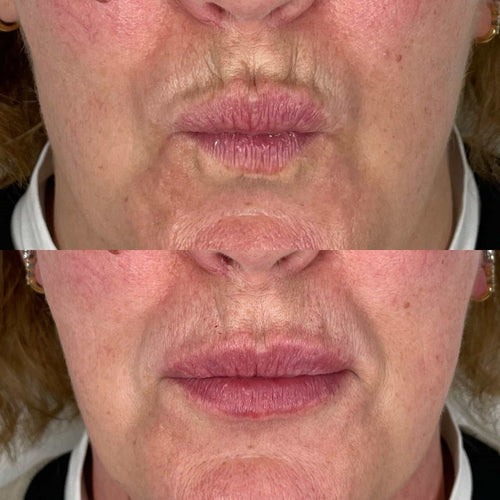Schedule Your Dermal Filler Consultation with Dr. Laura Geige Today
Genetic Predisposition
Genes and Nicotine Addiction
Genetic predisposition plays a significant role in nicotine addiction. While smoking is primarily driven by environmental factors, like social influence and stress, certain genes can make individuals more susceptible to developing a dependence on nicotine.
Genes influence how the body processes nicotine and responds to its effects. For example, some people possess variations in genes that code for nicotine receptors, leading to heightened sensitivity to nicotine’s pleasurable effects. These individuals may experience stronger cravings and find it more difficult to quit smoking.
Reserve a Dermal Filler Appointment with Dr. Laura Geige
Research has identified specific genes associated with nicotine addiction, including those involved in the metabolism of nicotine, dopamine signaling, and the regulation of stress response. Variations in these genes can influence an individual’s likelihood of becoming addicted to nicotine, the severity of their addiction, and their ability to quit.
It is important to note that genetic predisposition does not guarantee addiction. Many individuals with a genetic vulnerability to nicotine addiction never smoke or develop a dependence. Conversely, some people without these genetic predispositions may still become addicted due to environmental factors.
Therefore, while genetics contributes to the risk of nicotine addiction, it is not the sole determining factor. Environmental influences and personal choices ultimately play a crucial role in whether an individual becomes addicted to smoking or not.
Epigenetic Factors
Genetic predisposition refers to an increased likelihood of developing a particular trait or disease due to inherited genes from one’s parents.
While smoking behavior is largely influenced by environmental and social factors, studies suggest that genetics may play a role in predisposing individuals to nicotine addiction.
Research has identified several genes associated with nicotine metabolism, reward pathways in the brain, and impulse control, which can influence susceptibility to smoking.
For example, variations in the gene encoding for the enzyme CYP2A6, responsible for metabolizing nicotine, have been linked to differences in nicotine dependence.
Epigenetic factors, on the other hand, refer to modifications to DNA that do not alter the underlying genetic sequence but can influence gene expression.
These modifications can be influenced by environmental exposures, lifestyle choices, and even diet.
In the context of smoking, epigenetic changes have been observed in smokers compared to non-smokers, particularly in genes related to lung development, inflammation, and cancer risk.
For instance, exposure to cigarette smoke can lead to DNA methylation changes in genes involved in cell cycle regulation, potentially increasing the risk of lung cancer.
It’s important to note that genetic predisposition and epigenetic modifications do not determine whether someone will become a smoker or develop smoking-related diseases. They simply represent factors that can increase the likelihood.
Environmental influences, such as peer pressure, advertising, and access to cigarettes, play a crucial role in shaping smoking behaviors.
Furthermore, individual choices and coping mechanisms also contribute significantly to whether someone becomes addicted to smoking or develops smoking-related illnesses.
Environmental Influences
Social Learning
While genetics play a role in an individual’s susceptibility to addiction, environmental influences and social learning are powerful determinants of whether someone starts smoking and continues the habit.
Environmental Influences:
-
Early Exposure: Children exposed to cigarette smoke at home or in their community are more likely to become smokers themselves. This exposure can begin before birth through prenatal smoking, increasing the risk of respiratory problems and later nicotine addiction.
-
Peer Pressure: The social circles an individual belongs to significantly influence their behaviors. If friends smoke, it increases the likelihood of trying and subsequently becoming a regular smoker.
-
Media and Advertising: Traditional and new media often portray smoking as glamorous or aspirational, especially targeting young audiences. This can normalize smoking behavior and make it seem more appealing.
-
Stress and Coping Mechanisms: Smoking is sometimes used as a coping mechanism for stress, anxiety, or depression. Environments that are high-stress or lacking in healthy coping strategies can contribute to smoking initiation and continuation.
-
Accessibility and Affordability: Easy access to cigarettes and relatively low prices increase the likelihood of smoking, particularly among adolescents.
Social Learning:
-
Observational Learning: People learn by observing the behavior of others. Children who see family members or role models smoking are more likely to adopt this habit themselves. This learning process is reinforced when positive consequences (e.g., relaxation) are associated with smoking.
-
Imitation and Identification: Individuals, especially young people, often imitate the behaviors of those they admire or identify with. If someone perceives a popular figure or peer as a smoker, they may be more likely to try it themselves.
-
Social Norms: The perception of what is considered acceptable behavior within a social group can influence smoking habits. If smoking is prevalent in a particular community or peer group, individuals may feel pressure to conform.
It’s important to understand that both genetic predisposition and environmental factors interact to shape an individual’s likelihood of becoming a smoker.
Early Exposure
Environmental influences play a significant role in shaping individual characteristics, including susceptibility to smoking addiction. Early exposure to smoking and related environments can have profound and lasting effects on language development, cognitive abilities, and behavioral patterns.
Here are some key environmental influences that can impact an individual’s likelihood of becoming a smoker:
-
Parental Smoking: Children who grow up in homes where parents smoke are significantly more likely to become smokers themselves. This exposure, particularly during childhood and adolescence, increases the risk by influencing brain development, reinforcing addictive behaviors, and normalizing smoking as an acceptable behavior.
-
Peer Pressure: Social circles and peer groups heavily influence adolescents’ choices and behaviors. If a young person’s friends smoke, they are more likely to experiment with cigarettes, leading to potential addiction.
-
Media Influence: Exposure to media portrayals of smoking, especially in movies, television shows, and advertisements, can normalize and glamorize the act, increasing its appeal to young viewers.
-
Stress and Trauma: Individuals who experience chronic stress or traumatic events may be more prone to seek solace in nicotine as a coping mechanism. This is particularly true if smoking is modeled by family members or friends.
Early exposure to these environmental factors can have lasting consequences on an individual’s health and well-being, making it crucial to promote smoke-free environments and implement comprehensive prevention strategies from a young age.
Arrange Your Dermal Filler Consultation with Dr. Laura Geige at It’s Me and You Clinic
Beyond Genetics: Understanding Complex Interactions
Lifestyle Choices

While genetics undeniably play a role in our susceptibility to various diseases, including those linked to smoking, it’s crucial to understand that smoking-related health issues are not solely determined by genes.
The intricate web of factors influencing health encompasses:
- Genetics: Some individuals may inherit gene variations that make them more vulnerable to the harmful effects of smoking. These variations could affect how their bodies process toxins, repair damage, or respond to inflammatory responses triggered by smoke.
- Lifestyle Choices: Smoking itself is a primary culprit. The chemicals in tobacco smoke directly damage lung tissue, blood vessels, and other organs, increasing the risk of cancer, heart disease, stroke, and respiratory illnesses.
- Environmental Factors: Exposure to second-hand smoke, air pollution, and other environmental toxins can exacerbate the negative effects of smoking and contribute to disease development.
- Socioeconomic Factors: Access to healthcare, education about smoking risks, and social pressures can influence an individual’s likelihood of starting and continuing to smoke.
It’s essential to remember that genes provide a predisposition, not a destiny. Lifestyle choices exert a powerful influence on how those genes are expressed. Individuals with genetic risk factors for smoking-related diseases can significantly reduce their chances of developing these conditions by adopting a smoke-free lifestyle.
Conversely, even individuals without apparent genetic predispositions can still experience serious health consequences from smoking due to the direct damage it inflicts on the body.
Psychological Factors
Understanding whether smoking behaviors are “hereditary” requires a nuanced approach that goes beyond simple genetic inheritance. While certain genes may influence an individual’s susceptibility to addiction and nicotine dependence, it’s crucial to recognize the intricate interplay of environmental factors, psychological traits, and social influences.
**Epigenetics**, the study of how environmental factors can alter gene expression without changing the underlying DNA sequence, plays a significant role. For example, exposure to tobacco smoke during fetal development or early childhood can influence gene expression patterns related to addiction risk.
**Psychological factors** are also paramount. Individuals with certain personality traits, such as impulsivity, sensation-seeking, and difficulty coping with stress, may be more vulnerable to initiating and maintaining smoking habits.
Social influences, including peer pressure, cultural norms, and family history of smoking, can exert a strong impact on smoking behavior. Observing family members or friends smoke can normalize the behavior and increase the likelihood of experimentation.
Furthermore, **stress** is a major contributing factor to smoking initiation and continuation. Nicotine acts as a stimulant, providing temporary relief from stress and anxiety. However, this relief is short-lived, leading to a cycle of dependence.
Therefore, attributing smoking solely to genetics would be an oversimplification. A comprehensive understanding requires acknowledging the complex interplay of genetic predispositions, environmental exposures, psychological vulnerabilities, and social influences.
Decléor Direct Couture Lust Cafe Sant Jaume Valencia Alkhemist LA
- Why Are Kratom Gummies So Popular In Wellness Circles? - November 5, 2025
- What Is Tear Trough Filler Good For - November 4, 2025
- Weed Infused Juices For The Win - November 1, 2025
